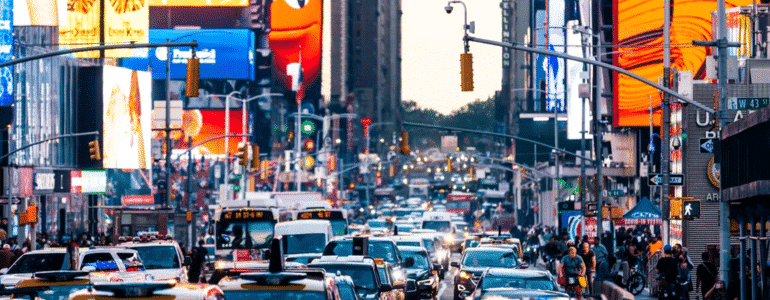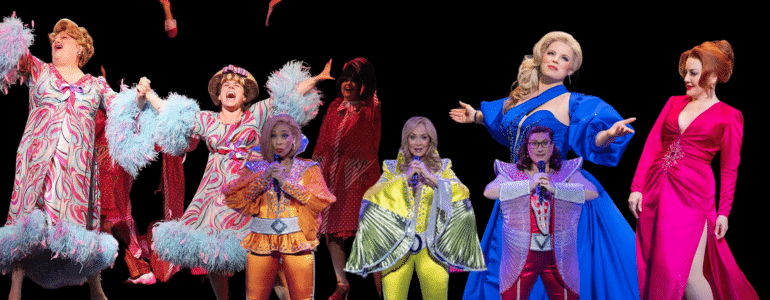[RESULTS REVEALED] Who came to Broadway in 2022-2023?
And we are back, peoples.
The 2022-23 season was the first full season on Broadway since the covid shutdown. Which means it’s the first full season that we’ve got demographic data to analyze.
Our friends at The Broadway League survey the shows every single year (pandemics notwithstanding) to determine who the heck is showing up! We can learn where in the world our ticket buyers are from, how old they are, what they watch and listen to, and why the heck they come to Broadway.
If you’ve been a reader here, then you know I’m a nerd for some demographic data. Why wouldn’t I be? It helps you understand who the bulk of the audience is and how they make their purchasing decisions (which helps you market to them in a more efficient manner). And it helps you understand who is NOT coming to the theater, so we can focus on audience development programs to get them to come.
One helps the short term for shows – and the other the long term for the industry.
And I don’t know about you, but I’m a lifer – so I believe you have to work both sides of these results.
Speaking of results, let’s see some of the takeaways from the Executive Summary of the Research Report entitled . . . The Demographics of The Broadway Audience NYC 2022-2023. Brought to you by The Broadway League. With my own editorial comments interspersed within.
- The season garnered 12.3 million admissions, 16.8% shy of the record-breaking 2018-2019 season pre-COVID (the last complete season before the shutdown).
Not so pretty. The double digit drop is alarming, especially considering the massive increase in costs that shows incurred that same season.
- Approximately 35% of attendances were by people from the New York City metropolitan area (21.7% from New York City and 13.6% from the surrounding suburbs.)
- Another 47.5% were by theatregoers from the United States (but outside of New York City and its suburbs.)
- 17% of theatregoers (or 2.1 million admissions) were from other countries. This was comparable with pre-COVID seasons.
- 65% percent of the audiences identified as female.
- The average age of the Broadway theatregoer was 40.4 years old. That was the youngest in the past twenty seasons.
From Ken: Some super news! But not surprising. We know that post-pandemic, the first audience to come back was the audience least at-risk. So while it’s great that the average age dropped, you also have to take in the fact that the older audience (the ones with more disposable income, more time to see shows, etc.) didn’t come as often.
- Twenty-nine percent of attendees identified themselves as BIPOC (Black, Indigenous, or People of Color), the highest percentage to date.
A fantastic step in the right direction, with so many more steps to go. Since the pandemic, there has been an increase in the amount of content created by and about the BIPOC community, and duh – the audience increases as a result. This ongoing work represents one of the biggest opportunities our industry has to return to a growth business. And it’s also the right thing to do.
- Of theatregoers aged 25 or older, 85.8% had completed college and 43.0% had earned a graduate degree.
- The average annual household income of the Broadway theatregoer was $271,277.
- The average number of attendances by the Broadway theatregoer was four in the past year. The group devoted fans who attended 15 or more performances comprised only 4.9% of the audience but accounted for 30.2% of all tickets (3.7 million admissions).
They are a small but mighty group! I’d also bet money that if you could measure their NPS (since this article), it would be off the charts.
- The strongest motivating factors for show selection were the music and personal recommendation.
This is the first time I’ve noticed “music” in this answer – and I’m paying close attention to it. Music has always been important to successful musicals. But it appears to be even more so now – based on what is working on Broadway.
- The average reported date of ticket purchase for a Broadway show was 34 days before the performance, compared to 47 days in the 2018-2019 season.
Not good, but not surprising. After every major “event” – from 9/11 to the 2008 financial crisis – the buying window shortens. People don’t want to take the risk, because they wonder if it’ll happen. Also, just about every show has tickets (especially since variable pricing was incorporated – shows don’t WANT to sell out too far in advance anymore for fear of leaving money on the table!)
What we need is a megahit and everyone’s windows will lengthen again.
- Most theatregoers attended in pairs or small groups of family or friends.
- Respondents reported having paid an average of $161.20 per ticket.
Expensive. It’s true. But live entertainment from the best in the world at what they do should be expensive. And it’s not like profitability increased. In fact, it went down. We’ll measure that in a few years.
- Ninety-five percent of attendees said they plan to see another Broadway show in the future.
- Twenty percent of theatregoers worked in New York City.
There you have it! The first full report since we’ve been back. What do you think?
What do you think will change in next year’s report? And what should we do to make it change in the right direction?
Podcasting
Ken created one of the first Broadway podcasts, recording over 250 episodes over 7 years. It features interviews with A-listers in the theater about how they “made it”, including 2 Pulitzer Prize Winners, 7 Academy Award Winners and 76 Tony Award winners. Notable guests include Pasek & Paul, Kenny Leon, Lynn Ahrens and more.














